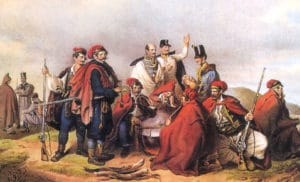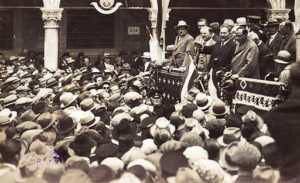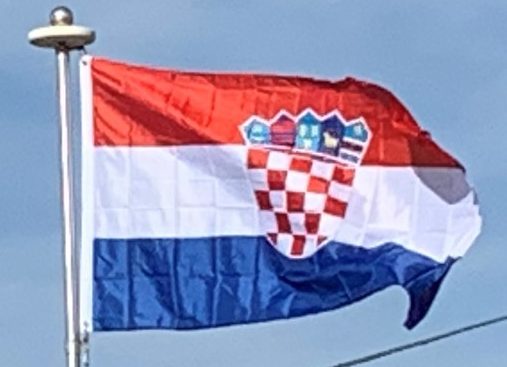The Croatian Parliament supported King Charles III’s Pragmatic Sanction and signed their own Pragmatic Sanction in 1712. Subsequently, the emperor pledged to respect all privileges and political rights of Kingdom of Croatia and Queen Maria Theresa made significant contributions to Croatian matters.
Between 1797 and 1809 the First French Empire gradually occupied the entire eastern Adriatic coastline and a substantial part of its hinterland, ending the Venetian and the Ragusan republics, establishing the Illyrian Provinces. In response the Royal Navy started the blockade of the Adriatic Sea leading to the Battle of Vis in 1811. The Illyrian Provinces were captured by the Austrians in 1813, and absorbed by the Austrian Empire following the Congress of Vienna in 1815. This led to formation of the Kingdom of Dalmatia and restoration of the Croatian Littoral to the Kingdom of Croatia, now both under the same crown. The 1830s and 1840s saw romantic nationalism inspire the Croatian National Revival, a political and cultural campaign advocating the unity of all South Slavs in the empire. Its primary focus was the establishment of a standard language as a counterweight to Hungarian, along with the promotion of Croatian literature and culture. During the Hungarian Revolution of 1848 Croatia sided with the Austrians, Ban Josip Jelačić helping defeat the Hungarian forces in 1849, and ushering a period of Germanization policy.

By the 1860s, failure of the policy became apparent, leading to the Austro-Hungarian Compromise of 1867 and creation of a personal union between the crowns of the Austrian Empire and the Kingdom of Hungary. The treaty left the issue of Croatia’s status to Hungary, and the status was resolved by the Croatian–Hungarian Settlement of 1868 when kingdoms of Croatia and Slavonia were united. The Kingdom of Dalmatia remained under de facto Austrian control, while Rijeka retained the status of Corpus separatum introduced in 1779.
After Austria-Hungary occupied Bosnia and Herzegovina following the 1878 Treaty of Berlin, the Croatian Military Frontier was abolished and the territory returned to Croatia in 1881, pursuant to provisions of the Croatian-Hungarian settlement. Renewed efforts to reform Austria-Hungary, entailing federalization with Croatia as a federal unit, were stopped by advent of World War I.
Yugoslavia (1918–1991):
On 29 October 1918 the Croatian Parliament (Sabor) declared independence and decided to join the newly formed State of Slovenes, Croats and Serbs, which in turn entered into union with the Kingdom of Serbia on 4 December 1918 to form the Kingdom of Serbs, Croats, and Slovenes. The Croatian Parliament never ratified a decision to unite with Serbia and Montenegro. The 1921 constitution defining the country as a unitary state and abolition of Croatian Parliament and historical administrative divisions effectively ended Croatian autonomy.
The new constitution was opposed by the most widely supported national political party—the Croatian Peasant Party (HSS) led by Stjepan Radić.

The political situation deteriorated further as Radić was assassinated in the National Assembly in 1928, leading to the dictatorship of King Alexander in January 1929. The dictatorship formally ended in 1931 when the king imposed a more unitarian constitution, and changed the name of the country to Yugoslavia. The HSS, now led by Vladko Maček, continued to advocate federalization of Yugoslavia, resulting in the Cvetković–Maček Agreement of August 1939 and the autonomous Banovina of Croatia. The Yugoslav government retained control of defense, internal security, foreign affairs, trade, and transport while other matters were left to the Croatian Sabor and a crown-appointed Ban.
